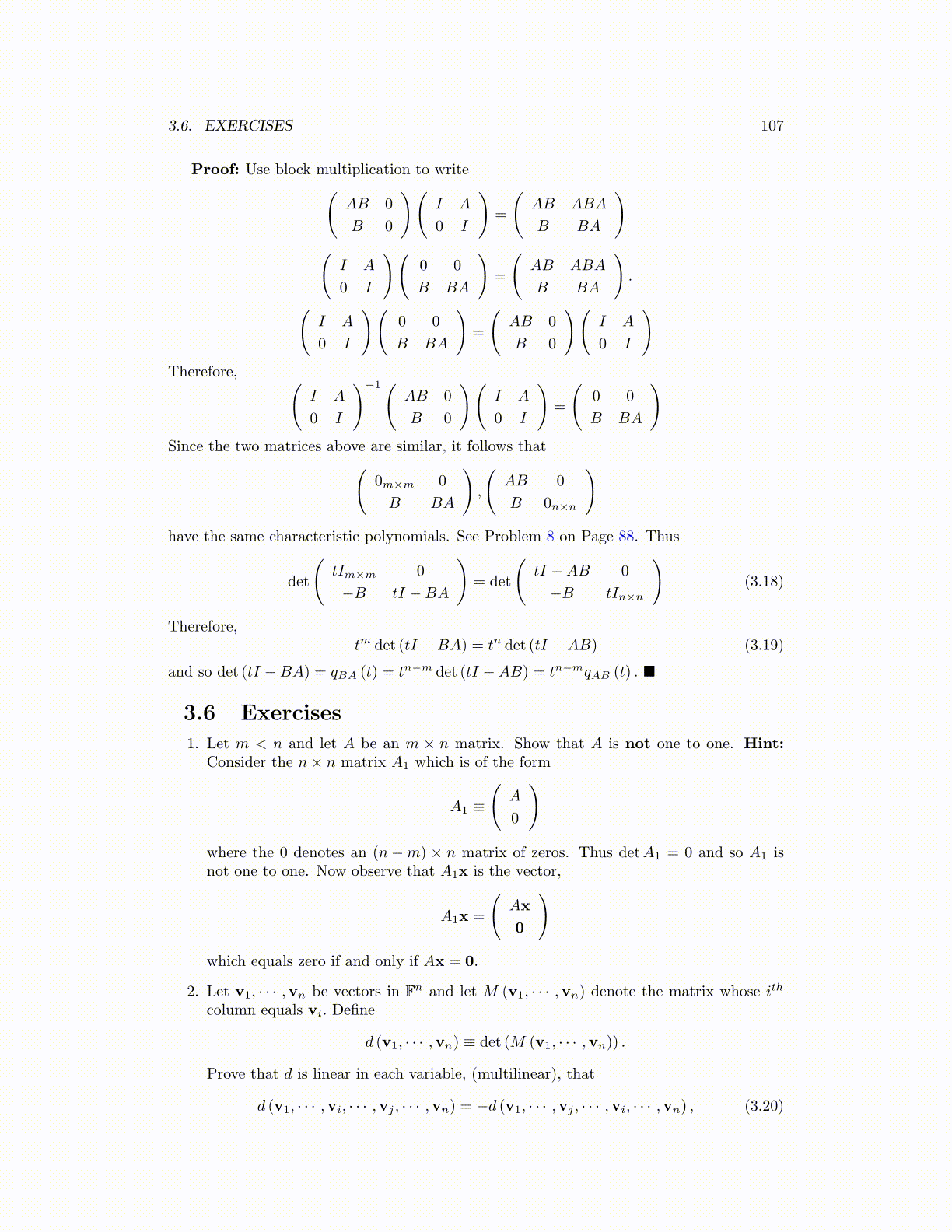
3.6. EXERCISES 107
Proof: Use block multiplication to write(AB 0
B 0
)(I A
0 I
)=
(AB ABA
B BA
)(I A
0 I
)(0 0
B BA
)=
(AB ABA
B BA
).
(I A
0 I
)(0 0
B BA
)=
(AB 0
B 0
)(I A
0 I
)Therefore, (
I A
0 I
)−1(AB 0
B 0
)(I A
0 I
)=
(0 0
B BA
)Since the two matrices above are similar, it follows that(
0m×m 0
B BA
),
(AB 0
B 0n×n
)have the same characteristic polynomials. See Problem 8 on Page 88. Thus
det
(tIm×m 0
−B tI −BA
)= det
(tI −AB 0
−B tIn×n
)(3.18)
Therefore,tm det (tI −BA) = tn det (tI −AB) (3.19)
and so det (tI −BA) = qBA (t) = tn−m det (tI −AB) = tn−mqAB (t) . ■
3.6 Exercises
1. Let m < n and let A be an m × n matrix. Show that A is not one to one. Hint:Consider the n× n matrix A1 which is of the form
A1 ≡
(A
0
)
where the 0 denotes an (n−m) × n matrix of zeros. Thus detA1 = 0 and so A1 isnot one to one. Now observe that A1x is the vector,
A1x =
(Ax
0
)which equals zero if and only if Ax = 0.
2. Let v1, · · · ,vn be vectors in Fn and let M (v1, · · · ,vn) denote the matrix whose ith
column equals vi. Define
d (v1, · · · ,vn) ≡ det (M (v1, · · · ,vn)) .
Prove that d is linear in each variable, (multilinear), that
d (v1, · · · ,vi, · · · ,vj , · · · ,vn) = −d (v1, · · · ,vj , · · · ,vi, · · · ,vn) , (3.20)